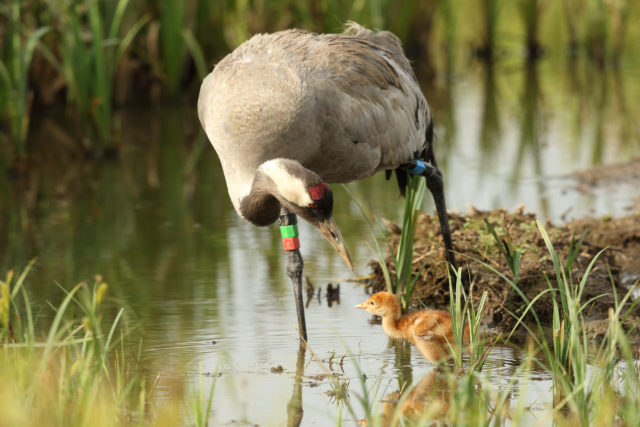
Common cranes which recolonised eastern England less than 40 years ago after a 400-year absence are now here to stay, research has found.
There could be as many as 275 breeding pairs of the UK’s tallest bird within 50 years, scientists at the University of Exeter, the RSPB and the Wildfowl and Wetlands Trust (WWT) predict.
Cranes were lost from the UK as a breeding bird in the 16th century as a result of hunting and the drainage of large areas of wetlands, but some returned to the east of England in 1979.
Conservationists supported the small population, but they breed slowly and their numbers remained low over the next two decades, leaving the population at risk of disappearing again if hit by problems such as disease.

A new population model, published in a paper in the journal Animal Conservation, found that an important part of the growth in numbers until 2010 were new arrivals from continental Europe.
Then conservationists began to import eggs and release fledgling cranes in the west of England as part of the “great crane project”, which by 2014 had boosted the UK population with 90 new birds.
As a result, the population model predicts a 50% increase in the number of breeding cranes, from 178 now to 275 pairs in the UK in 50 years’ time.
Dr Andrea Soranio-Redondo, who led the research as part of her PhD, said: “Any small and newly established group is particularly vulnerable to random events such as an outbreak of disease.
“Knowing how many there are isn’t enough to predict whether they’re safe.
“Understanding the interplay between new arrivals, births and deaths enables us to judge the risk they face and predict their future with far more certainty.”

Professor Stuart Bearhop of the University of Exeter said: “Of course it is obvious that adding birds will boost the population size, but what we find here is that these additional birds, as they establish themselves and become breeders, are a key element in the future persistence of this charismatic species in the UK.”
Schemes to move wildlife such as eggs or chicks from healthy populations to bolster numbers elsewhere were often thought of as expensive and risky.
But conservationists said the findings showed that wildlife translocation, alongside other measures such as providing the right habitat, could help accelerate the recovery of species.
Dr Geoff Hilton, WWT’s head of conservation science, said: “Previously, cost and uncertainty have put some conservationists off these types of interventions.
“However delving deeper into the numbers for cranes shows that, in combination with good habitat management and protection, we can greatly accelerate the recovery of some of our most special wildlife, allowing more people to enjoy them more quickly.”
The next challenge to help cranes, which are now a regular sight in the east of England, Somerset and Gloucestershire, is to ensure enough wetlands for them to breed safely, experts said.
This means restoring whole landscapes so there are more, bigger, better quality and joined-up areas of habitat for wildlife such as common cranes, they said.


Comments: Our rules
We want our comments to be a lively and valuable part of our community - a place where readers can debate and engage with the most important local issues. The ability to comment on our stories is a privilege, not a right, however, and that privilege may be withdrawn if it is abused or misused.
Please report any comments that break our rules.
Read the rules here